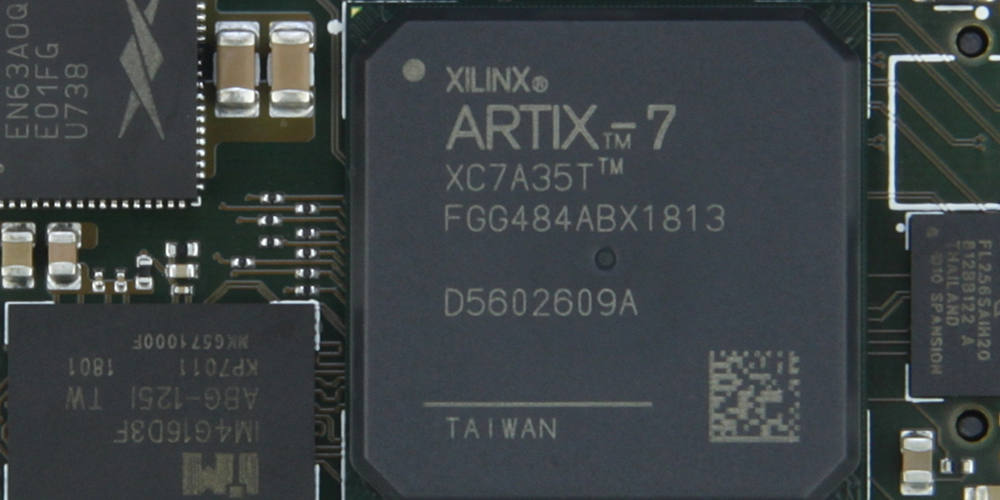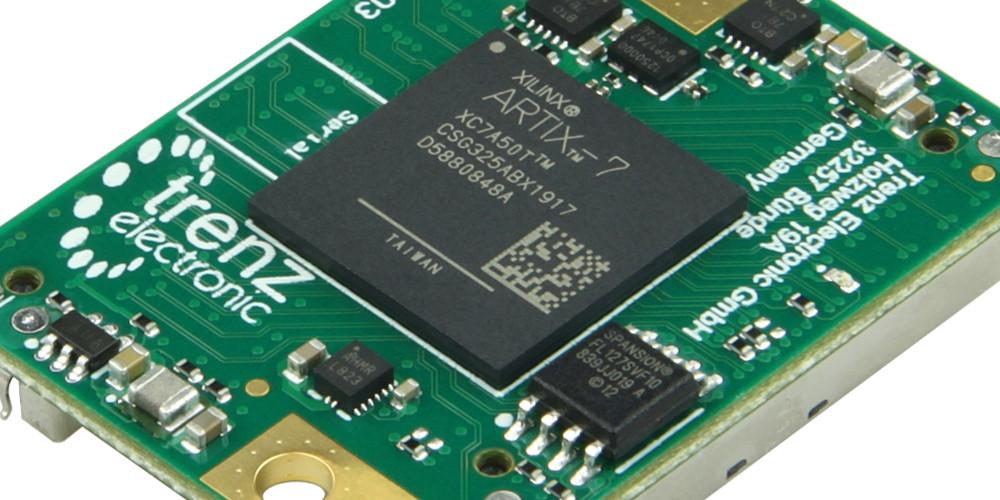Introduction to FPGAs
FPGA (Field Programmable Gate Array) devices are integrated circuits that can be programmed or configured to implement custom logic and functions. The ability to customize FPGAs provides great flexibility for many applications.
Key capabilities and benefits of FPGAs:
- Contain programmable logic blocks and interconnects
- Can implement any desired digital logic function
- Reconfigurable even after deployment
- Parallel processing architecture
- Used for DSP, software-defined radio, imaging, etc.
- Facilitates rapid prototyping and design iteration
- Reduces development time relative to ASICs
FPGAs are programmed by loading configuration data into the device memory cells that set up the logic blocks and connections. Leading vendors include Xilinx, Intel (Altera), Lattice, Microchip, and others.
Introduction to Artix-7 FPGA

The Xilinx Artix-7 family delivers higher performance, capacity, and bandwidth relative to prior low-cost FPGAs. Artix-7 provides an affordable access point for the Xilinx 7 series architecture.
Some key features of the Artix-7 include:
- 28 nm process technology
- Up to 215K logic cells
- 12.5 Gbps transceivers
- DSP slices with 25×18 multipliers
- 5,662 Kb of block RAM
- PCI Express (up to Gen2 x4) blocks
- Advanced power management
- High-speed memory interfacing
Artix-7 scales from small, low-cost devices up to FPGAs with tremendous capacity for advanced applications. The family aims to bridge the gap between high-end FPGAs and CPLDs/ASICs.
Artix-7 Architecture
Understanding the architecture of Artix-7 FPGAs is important for making effective use of the hardware resources.
Logic Fabric
The core of Artix-7 is an array of Configurable Logic Blocks (CLBs) containing:
- 6-input look-up tables (LUTs) for logic
- 8 flip-flops per LUT for sequential logic
- Arithmetic circuits using LUTs and carry chains
- 464 Kb of block RAM per CLB
The LUTs combine to form larger logical functions and can also provide distributed memory capabilities.
Routing and Interconnect
A high-performance routing and interconnect structure connects the CLB array:
- Direct routing connections between adjacent CLBs
- Fast carry chains for arithmetic functions
- Long line buses for low-skew connectivity
- Fast hierarchical routing structure
- Up to 1,064 routable signals per block
This interconnect delivers extensive routing capability across devices.
DSP Blocks
For specialized digital signal processing, dedicated DSP slices provide:
- 25×18 bit two’s complement multipliers
- 48-bit adder/accumulator/registers
- 25-bit pre-adder
- Cascade for wider precision operations
DSP blocks enable high-performance filtering, FFTs, and other math-intensive functions.
Block RAM and FIFO
For on-chip data storage, Artix-7 provides 36 Kb block RAM with two completely independent ports:
- True dual-port operation
- Configurable as RAM, ROM or shift register
- FIFO support with built-in flags and counters
- Optional error correction circuitry
Each 36 Kb block can also be cascaded for deeper memory capacity.
Transceivers
To support high-speed communications, integrated multi-gigabit transceivers support data rates up to 12.5 Gbps:
- Support for common protocols like Gigabit Ethernet, Fibre Channel, Interlaken
- SERDES capability for serial/deserializer conversion
- Integrated clock data recovery circuits
- Transmit pre-emphasis and receive equalization
Artix-7 Device Family
The Artix-7 family contains different sized devices with optimized mixes of the key resources:
Artix-7 FPGA Device Features:
| Device | Logic Cells | LUTs | Block RAM (Mb) | DSP Slices |
|---|---|---|---|---|
| A35T | 76.5K | 305K | 4.86 | 240 |
| A50T | 97K | 388K | 6.2 | 360 |
| A75T | 131K | 523K | 12.7 | 600 |
| A100T | 185K | 739K | 17.3 | 960 |
| A200T | 215K | 859K | 19.3 | 960 |
Artix-7 CPLD Device Features:
| Device | Logic Cells | LUTs | Block RAM (Mb) | DSP Slices |
|---|---|---|---|---|
| AC701 | 115K | 464K | 6.8 | 0 |
| AC750 | 140K | 560K | 9.3 | 160 |
| AC777 | 180K | 720K | 12.3 | 160 |
This range of devices allows matching different programmable capability to application requirements.
Development Tools
Xilinx provides their flagship Vivado Design Suite for developing with Artix-7:
- Vivado for IP-based system design and implementation
- Vivado HLS for high level C/C++ synthesis
- SDSoC for complex application level integration
- System Generator for DSP design
- PetaLinux tools for embedded software development
Third party tools are also available:
- ISE WebPACK – low cost design tools
- ModelSim and QuestaSim – HDL simulation
- MATLAB and Simulink – algorithm modeling
- C/C++ compilers – embedded software
Evaluation boards with Artix-7 FPGAs like the Nexys A7 provide easy prototyping.
Artix-7 Applications
The high performance, capacity, and low cost of Artix-7 enable diverse applications:
- Aerospace and defense – radar, guidance, communications
- Automotive – driver assistance, infotainment
- IoT – endpoint aggregation, analytics, control
- Industrial – automation, instrumentation, motor control
- Broadcast – video processing, encoding, decoding
- Medical – ultrasound, tomography, DNA sequencing
- Consumer – wearables, appliances, drones
For these systems, Artix-7 provides more capability than older FPGAs while minimizing cost and power.
Artix-7 vs. Spartan-6
Compared to the prior Spartan-6 generation, Artix-7 delivers much higher capability and performance:
- Smaller 28nm process (vs. 45nm for Spartan-6)
- 1.0V core voltage (vs 1.2V) for lower power
- Up to 859K logic cells (vs 147K for max Spartan-6)
- Up to 1,934 Kb block RAM (vs 10Mb for max Spartan-6)
- Up to 2,016 DSP slices (vs 700 for max Spartan-6)
- Transceivers up to 12.5Gbps (vs 6.5Gbps)
- PCIe Gen2 (vs Gen1 for Spartan-6)
- Approximately 2x the performance per watt
For new low-cost FPGA designs, Artix-7 provides gigantic leaps in capacity, bandwidth, and power efficiency opening up more possibilities.
Artix-7 Power Management
As with all 7 series devices, Artix-7 employs advanced power management techniques:
- Multi-voltage power design with 1.0V core voltage
- Integrated regulator for noise-free power supply
- suspension mode for zero power consumption
- Power gating for segmenting unused logic
- Partial reconfiguration to disable unused sections
- Fine-grained clock gating control
- Logic redundancy to reduce switching
- Advanced packaging for cooling
These capabilities minimize power which is crucial for energy-constrained applications.
Reliability and Security

For critical systems, Artix-7 provides reliability and security features:
- Configuration CRC and readback for error detection
- Optional configuration memory SECDED error correction
- AES encryption for design security
- Device DNA identification and authentication
- Secure memory access and firewall control
- Redundant and user-settable configuration
- SEU mitigation support
Safety-critical aerospace/defense systems can benefit greatly from these enhancements.
Conclusion
The Xilinx Artix-7 family delivers a new level of performance, capacity, and bandwidth to low-cost programmable logic. With abundant logic, memory, DSP blocks, transceivers, and I/O combined with advanced power management, Artix-7 enables innovative and flexible system designs. The Vivado and SDSoC design tools provide a complete end-to-end development environment. For the latest low-cost FPGA applications, Artix-7 marks a huge leap forward in reconfigurable logic technology.
Artix-7 FPGA FAQ
Here are some common questions about Xilinx Artix-7 FPGAs:
What are the main differences between the Artix-7 and Spartan-7 FPGA families?
The Artix-7 is more capable and higher performance than Spartan-7. Key differences:
- Artix-7 uses a smaller 28nm process vs 45nm for Spartan-7
- Artix-7 has up to 859K logic cells vs 324K for max Spartan-7
- Artix-7 offers faster 12.5Gbps transceivers vs 3.2Gbps
- Artix-7 has higher performance DSP slices
- Artix-7 supports PCIe Gen2 vs Gen1 for Spartan-7
What design tools can be used with Artix-7 FPGAs?
The primary Xilinx tools are Vivado Design Suite and SDSoC. Third-party tools including MATLAB, C compilers, and OpenCores IP support Artix-7 as well.
What kind of clock speeds can Artix-7 FPGAs support?
Artix-7 supports a wide range of clock speeds:
- FPGA logic up to 500MHz+
- Internal VCOs up to 1.6GHz
- Transceiver serial data rates up to 12.5Gbps
- DDR3 memory interface up to 1.6Gbps
What are some of the most popular development boards for Artix-7 FPGAs?
Some of the widely used Artix-7 boards are:
- Nexys A7 by Digilent
- Basys 3 by Digilent
- PYNQ-Z1 by Xilinx
- KCU105 by Xilinx
- Arty by Digilent
- Mojo V3 by Embedded Micro
How does partial reconfiguration work on Artix-7 FPGAs?
The Vivado tools support partial reconfiguration to modify sections of the FPGA logic while the rest continues running. This is useful for dynamic logic adaptation.
